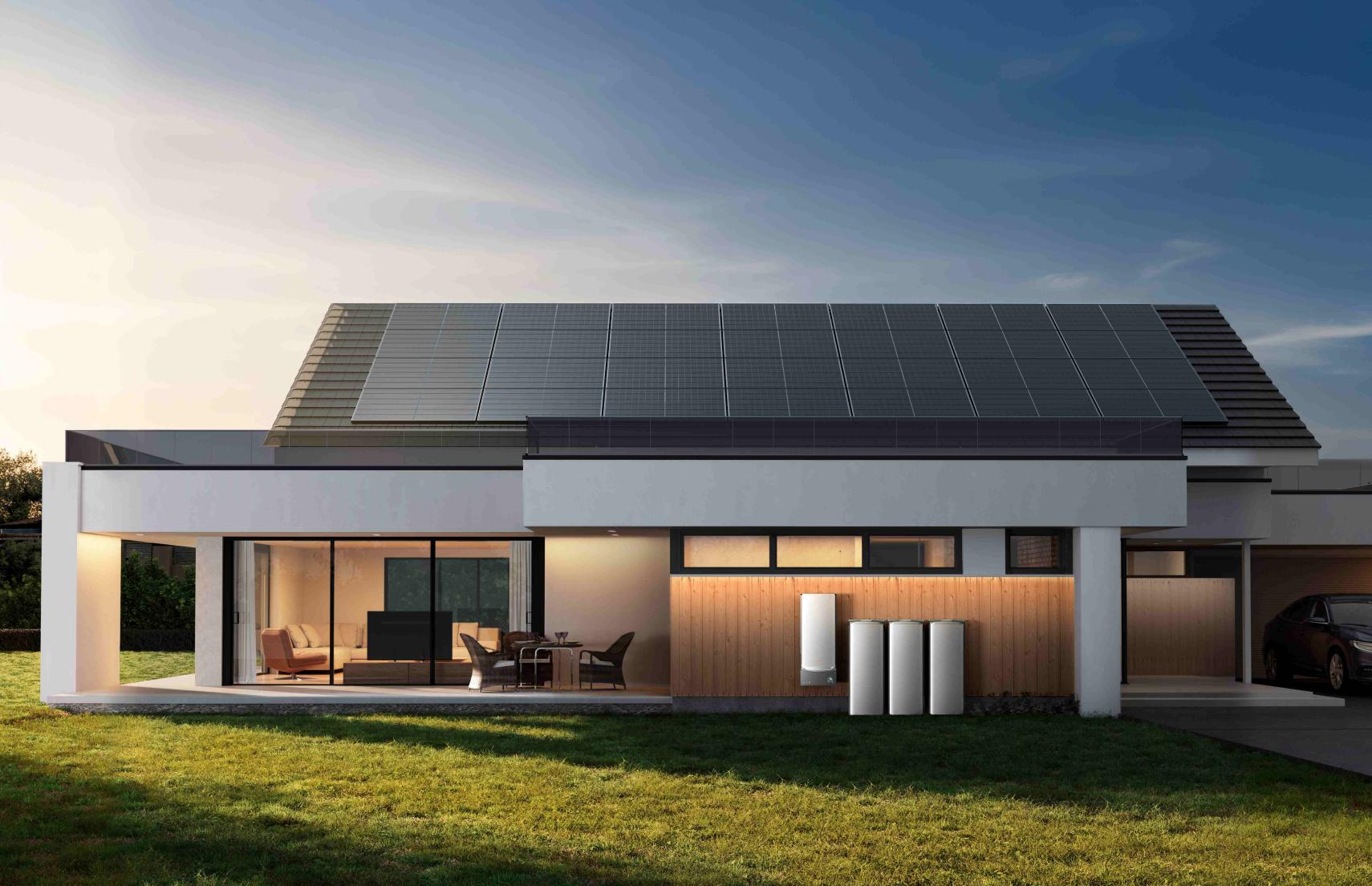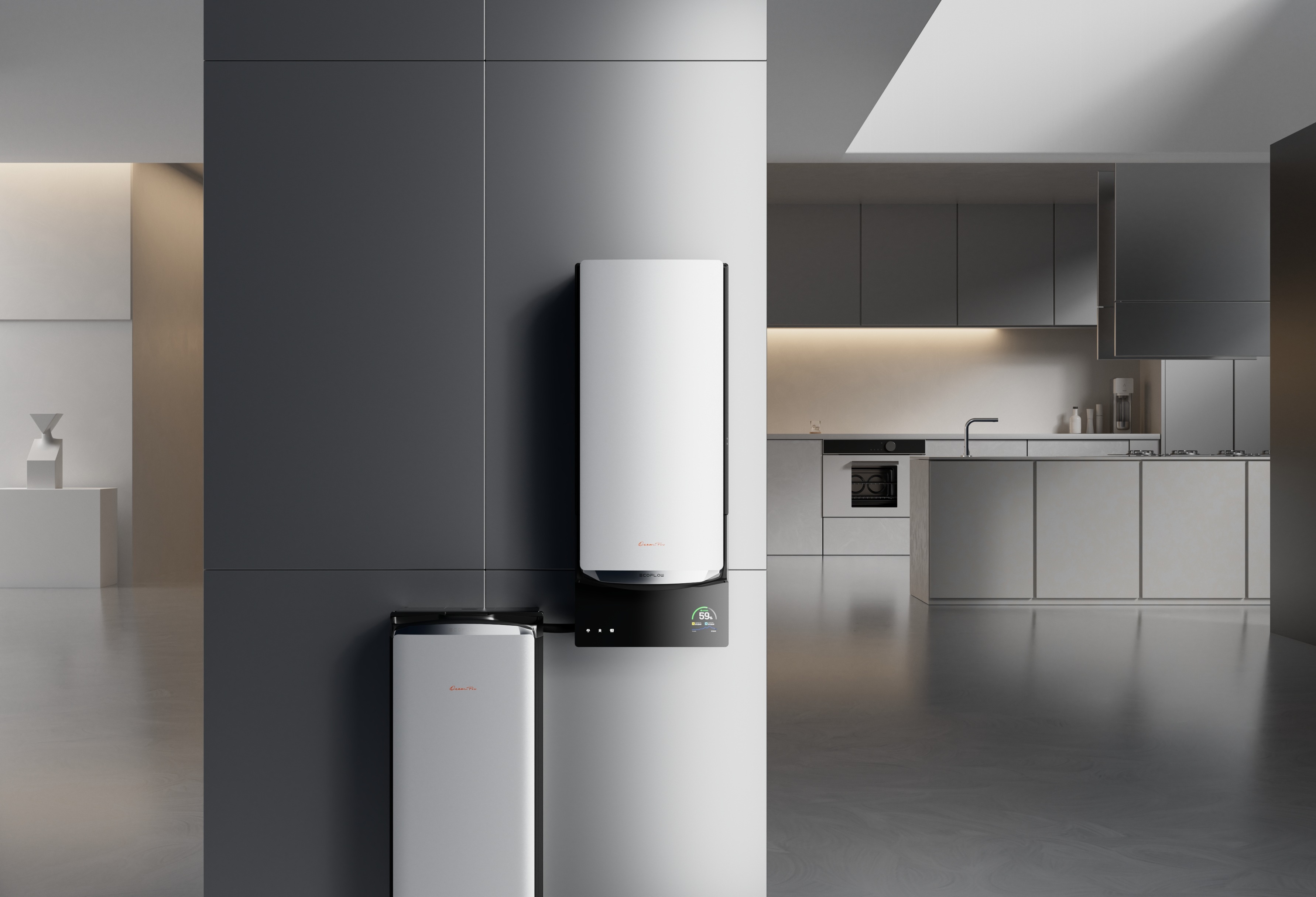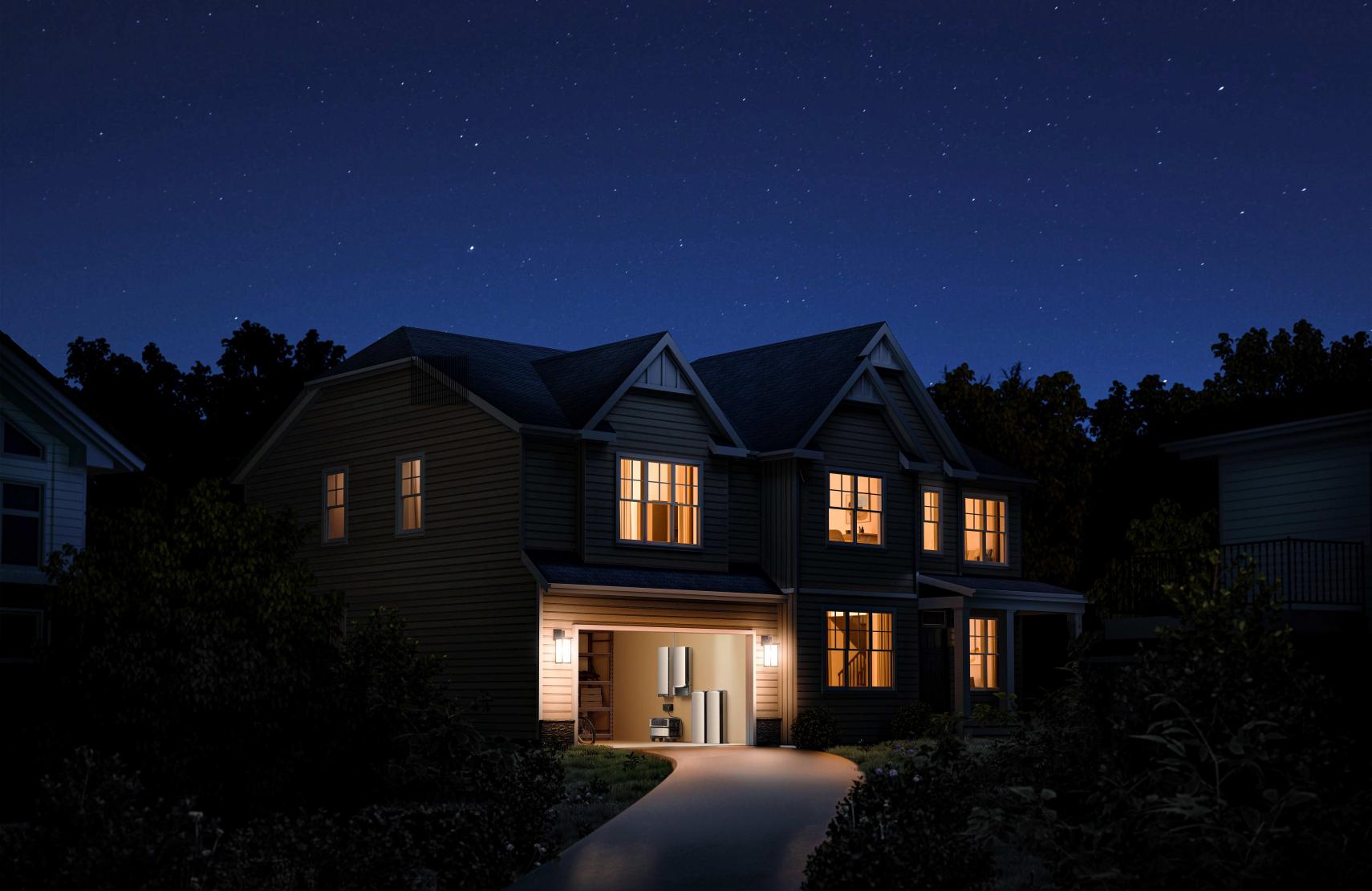Solar Home & 10 Trendy Passive Solar Home Designs and More
A solar home uses the sun's energy to power your daily life—whether that's heating your space in winter, keeping it cool in summer, or running your appliances. The smartest approach? Passive solar home designs that work with nature instead of against it. This guide breaks down what makes these homes special, showcases ten modern designs that actually work, and helps you determine if a solar home battery is needed to complete the picture.
What Is a Solar Home?
When people discuss solar homes today, they typically refer to houses designed to harness and utilize sunlight naturally. Think of it as letting your house do heavy lifting instead of relying entirely on mechanical systems.
Solar Home Definition
A solar home is any residence that harnesses solar energy for heating, cooling, or electricity. Here's the thing—not all solar homes are created equal. Some slap solar panels on the roof and call it a day. Others get built from the ground up to work with the sun's path across your property.
Passive Solar Home Core Concept
Passive solar homes are the real deal. They utilize a home's structure—walls, windows, and floors—to collect, store, and distribute heat without the need for pumps or fans. Your south-facing windows (in the Northern Hemisphere) catch the winter sun. Your thermal mass floors absorb warmth during the day and release it at night. No moving parts are required.
Active vs. Passive Systems Comparison
Active systems require equipment, including solar panels, pumps, fans, and batteries. They generate electricity or pump heated water through your house. Passive systems are built into the bones of your home. Windows go in specific spots. Overhangs block summer sun but let in winter rays. Materials are chosen for how they absorb and release heat.
Most modern solar homes blend both approaches. For a passive-active blend, a modular solar home battery, such as the EcoFlow OCEAN Pro (scalable from 10–80 kWh), can store daytime gains and smooth nightly loads without complicating the architecture.
Key Advantages and Principles
The beauty of passive solar homes lies in their simplicity. Your heating and cooling bills can be cut substantially—authoritative design guides report reductions of 25–75% in heating energy, depending on climate and design. You stay comfortable year-round without having to crank the thermostat, you're not burning fossil fuels to heat your space—the sun does it for free.
The working principle comes down to three key elements: orientation (the direction your house faces), thermal mass (materials that store heat), and insulation (keeping that heat where you want it).
What Are the 10 Trendy Passive Solar Home Designs?
Today's passive solar homes bear little resemblance to the clunky boxes of the 1970s. Architects have figured out how to apply these principles in sleek, modern designs that actually look aesthetically pleasing.
Modern Minimalist Solar Design
Clean lines, floor-to-ceiling glass on the south side, concrete floors that store heat—this design is all about doing more with less. Big overhangs keep summer sun out while winter rays stream in.
Earth-Sheltered Solar Home
Build into a hillside or pile earth against your walls, and you get natural insulation year-round. The subsurface ground temperature typically remains near the local annual average, often around 50–60°F in many U.S. regions (generally ~40–70°F, depending on location), which means less work for your heating and cooling systems.
Greenhouse-Integrated Design
Attach a greenhouse to your south wall, and you've got a solar approach collector that also grows tomatoes. The greenhouse heats up during the day and shares warmth with your living space. Vent it out in summer to avoid overheating.
Trombe Wall System
Named after French engineer Félix Trombe, this setup puts a dark-colored wall behind glass. The sun heats the wall, air rises through vents at the top of your home, and cooler air is pulled in at the bottom—simple physics.


Clerestory Window Architecture
High windows near your roofline allow winter sun to enter and create natural air circulation. Hot air rises out in summer, pulling cooler air through lower windows. No fans needed.
Solar Atrium Design
A central courtyard with a glass roof becomes the heart of your home's thermal system. It collects heat and light, then shares it with surrounding rooms. Popular in colder climates where you want maximum sun exposure.
Sunspace and Solarium Integration
Similar to the greenhouse approach, but designed more for a living space. Three-season rooms with lots of glass act as thermal buffers—they pre-heat air before it enters your main living areas.
Concrete Slab Thermal Mass Design
Pour a thick concrete slab, stain or polish it on your finished floor, and you've got thermal mass that stores daytime heat for nighttime use. Cheaper than fancy flooring and works better thermally.
Living Wall Solar Concept
Green walls on your building's exterior provide insulation and cooling. The plants absorb more shade and water vapor, which helps drop temperatures around your home by several degrees in summer.
Hybrid Passive-Active Design
This approach combines passive design principles with active solar panels and smart home tech. Your building envelope serves as the baseline work, while panels and batteries handle the electricity needs.
How to Develop Effective Passive Solar Home Plans?
Good passive solar home plans don't happen by accident. You need to think through several factors before breaking ground.


Site Analysis and Solar Access
Walk your property at different times of day and various seasons if possible. Where does the sun hit? What's blocking it—trees, neighboring buildings, hills? You need clear southern exposure (or northern exposure in the Southern Hemisphere) for passive solar to work effectively.
Building Orientation and Functional Zoning
Your main living spaces—kitchen, living room, bedrooms you use during the day—go on the south side. Bathrooms, laundry rooms, and closets act as thermal buffers on the north. The long axis of your house should run east-west to maximize southern exposure.
Thermal Mass And Insulation Selection
Concrete, brick, and stone are excellent absorbers of heat. You want thermal mass where sunlight hits it directly. However, thermal mass without insulation is pointless—you. You need insulation levels aligned with DOE guidance—walls typichave an R-value of 13 21–R-21 (or higher by assembly) and have an R-value of 38 60–Rdepending on the climate,ndent to keep that heat inside.
Window And Ventilation Design
South-facing windows should account for roughly 7-12% of your floor area in cold climates, and less in hot climates. Overhangs should block summer sun (when it's high) but allow winter sun (when it's low). Cross-ventilation matters too—place windows opposite each other to create natural airflow.
Budget Planning and Cost Control
Passive solar design costs about the same as conventional energy generated during the day and at night. You might spend more on windows and insulation, but save on mechanical systems. Retrofitting an existing house costs more—sometimes 20-30% above conventional renovation prices.
The key is making smart tradeoffs. Spend money where it matters (insulation, good windows) and save where it doesn't (fancy finishes that don't affect thermal performance).
When Do You Require a Solar Home Battery?
Even the coolest passive solar home setup won't power your TV or charge your phone. That's where batteries step in—but honestly, not everyone really needs them.


Nighttime And Cloudy-Day Demand
Solar panels only make energy while the sun is out. If you are grid-connected, you draw off the utility on cloudy days and overnight. If you don't want to do that—or are unable to connect to the grid—you will need batteries to store energy generated during the day for use at night. Technologies like the EcoFlow OCEAN Pro complement roof-PV, storing daytime surplus on days and transferring it to evenings without altering your lifestyle.
Energy Independence Needs
To be 100% off-grid, you definitely need batteries, period. You need a means of storing electricity for days with cloudy skies. Whole-house, off-grid systems typically require at least 30 kWh of storage, depending on the loads and specific circumstances. If energy independence is the objective, the OCEAN Pro module packs allow you to start small and grow along the way, matching real-world loads in the long term.
Backup Power And Stability
Even with a grid connection, batteries provide backup during outages. In areas with unreliable power or frequent storms, a solar home battery ensures your lights stay on and your food remains fresh. Basic systems start around 13 kWh—enough for essentials during a multi-day outage. For whole-home backup, OCEAN Pro's high-power architecture is designed to keep major appliances running during severe weather.
Cost-Benefit Analysis
Battery systems are costly. An average ~13.5 kWh home battery costs roughly $10,877 minus the 30% federal tax credit. If you have time-of-use rates through your utility, you can charge battery banks during off-peak hours and draw stored energy during higher-priced periods. Annual bill savings vary by rates and usage and can be hundreds to upwards of $1,000 or more through innovative management.
Battery Types And Capacity
Lithium-ion battery dominates the residential market today. They are compact, efficient, and come with ~10-year warranties from big-name manufacturers. Lead-acid batteries have lower initial costs but require more frequent replacement. Generally speaking, a sizing rule of thumb is that a single system of approximately 13 kWh typically suffices for essentials, but whole-home backup generally requires 30 kWh or larger.
As a general rule of thumb for sizing, start around 10–15 kWh for necessities and leave headroom to grow; the EcoFlow OCEAN Pro accommodates expansion to 80 kWh without requiring a system upgrade.
Charge your battery off key loads—the absolute necessities that must be kept alive during the blackout. 10-15 kWh are needed for household necessities, while 20 kWh or more are required for whole-house backup.
FAQs
Q1. Can I Retrofit My Existing Home Into a Passive Solar Home?
Retrofitting is feasible but doesn't come without problems. You can't drastically alter your home's orientation, the core of the passive solar concept, but you can retrofit thermal mass (such as stone or tile floors facing the sun), improve insulation, install better windows and proper overhangs, and ventilate more effectively. South windows are frequently the best return on investment for retrofits. You have to work within what you have — you may not be able to make it an all-out passive solar home, but you can devise enough of the principles to reduce your energy bills by 30-40%. Begin by conducting an energy audit to identify your most significant heat loss areas, and then make repairs that specifically address those issues.
Q2. What’s the Difference Between Passive Solar Heating and Just Having Lots of Windows?
Big difference. Random windows can actually hurt your energy efficiency—they lose heat at night, create glare, and overheat rooms in summer. Passive solar design is strategic. You size south-facing windows based on calculations (not guesswork), add thermal mass exactly where the sun hits to store that heat, include appropriately sized overhangs that block summer sun but allow winter sun, and balance everything with insulation to prevent heat loss. A room with numerous random windows might be bright, but it can be thermally uncomfortable. A properly designed passive solar system maintains steady temperatures and significantly reduces heating costs. The science behind window placement, sizing, and shading makes all the difference between a greenhouse effect and controlled solar gain.
Q3. Do Passive Solar Homes Actually Perform on Cloudy Days?
Yes, but they function differently than they do in sunny locations. Cloudy climates receive diffuse sunlight that can be harvested through passive design. The strategies are different—you pack more insulation to retain the heat you gather, maximize south-facing glazing to capture every ray of available sunlight, and frequently include active heating backup for more extended periods of gray weather. Germany has thousands of passive solar buildings, despite having notoriously cloudy weather. You need to have realistic expectations—the contribution of your solar energy would be 40-50% of your heating loads, rather than 70-80% in sunny locations. However, a 40% reduction is still significant, and the design principles of insulation and air tightness benefit every place and every climate.
Conclusion
Ready to cut your energy bills and live better? Begin by evaluating your site's orientation and solar access. For new construction or retrofits, incorporating passive solar principles can reward you for decades. For a round-the-clock-performing passive design, consult your installer about the EcoFlow OCEAN Pro—a scalable, whole-house solar battery system that grows along with your requirements, delivering steady comfort through nighttime and storms.